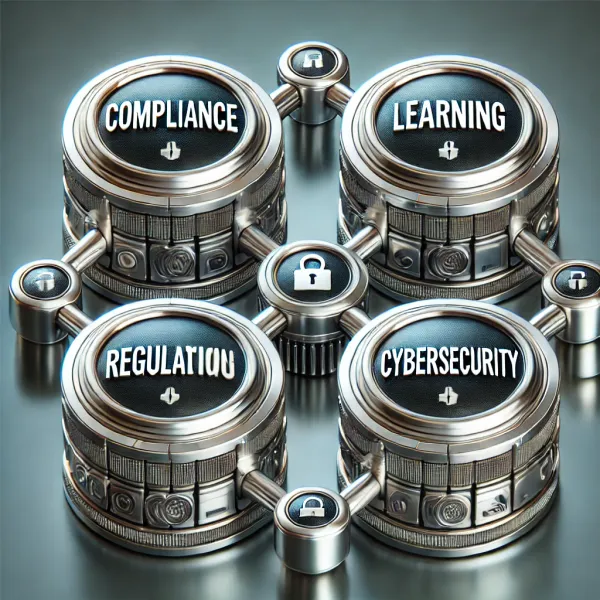Introducing the Regulatory Compliance Cycle
Effective compliance management is more important than ever. It safeguards organizations against legal, financial, and reputational risks. The Regulatory Compliance Cycle offers a structured, repeatable framework for meeting evolving regulatory obligations with clarity and control.
This cycle breaks down the often complex world of regulatory compliance into four actionable stages, supported by continuous planning and governance. Whether you're dealing with cybersecurity regulations (like DORA or NIS2), data privacy laws (like GDPR), or financial risk controls, this cycle can help you navigate your responsibilities confidently.

Why does it exist?
The Regulatory Compliance Cycle is designed to make compliance simpler, more transparent, and more manageable — while ensuring that no critical step is overlooked.
It creates a repeatable rhythm of compliance activities and builds a foundation for continuous improvement.
How do I use the Regulatory Compliance Cycle?
You can enter the cycle at any point, depending on your current level of compliance maturity. The goal is to loop through the stages continuously to maintain alignment with evolving laws and internal policies. For most organizations, the best entry point is the Assess & Review stage. This provides the necessary visibility to shape your compliance roadmap.
🌀 The Four Stages of the Regulatory Compliance Cycle
1) Assess & Review your compliance posture

Start by identifying and evaluating your legal and regulatory obligations.
This may include conducting:
- Risk assessments (e.g., cybersecurity, data protection, financial controls)
- Policy gap analyses
- Internal audits or control self-assessments
If you already have assessments in place, review them periodically — especially after organizational or regulatory changes.
2) Rectify & Implement your compliance controls

Based on your findings, address compliance gaps through corrective actions.
This may involve:
- Drafting or updating internal policies
- Deploying or upgrading technical controls (e.g., encryption, access management, audit trails)
- Strengthening governance or third-party risk processes
All actions should be documented in a remediation plan with timelines and ownership.
3) Test & Monitor your controls

Compliance isn’t static — controls must be tested, validated, and monitored.
Key activities include:
- Continuous control testing and automated alerts
- Compliance monitoring dashboards
- Incident tracking and root-cause analysis
- Internal audits and regulatory reporting
This phase ensures your safeguards are effective and aligned with your obligations.
4) Train & Empower your teams

Even the best controls can fail without well-informed people.
Regulations often require that employees:
- Receive role-specific compliance training
- Understand key policies and codes of conduct
- Participate in periodic awareness sessions (e.g., phishing simulations, privacy drills)
- Engage in real-life exercises (e.g., crisis simulations, business continuity testing)
Training is not just a checkbox — it builds a compliance culture across your organization.
🔁 Plan & Manage – The Foundation of the Cycle
Underlying every stage is the need for structured planning, documentation and oversight.
This includes:
- Maintaining up-to-date compliance registers
- Tracking KPIs and KRIs
- Reporting to stakeholders or regulators
- Adapting to new rules and emerging risks
- Ensuring board-level visibility
By continuously cycling through these four stages — and embedding compliance into your governance model — you strengthen your resilience and regulatory standing.




